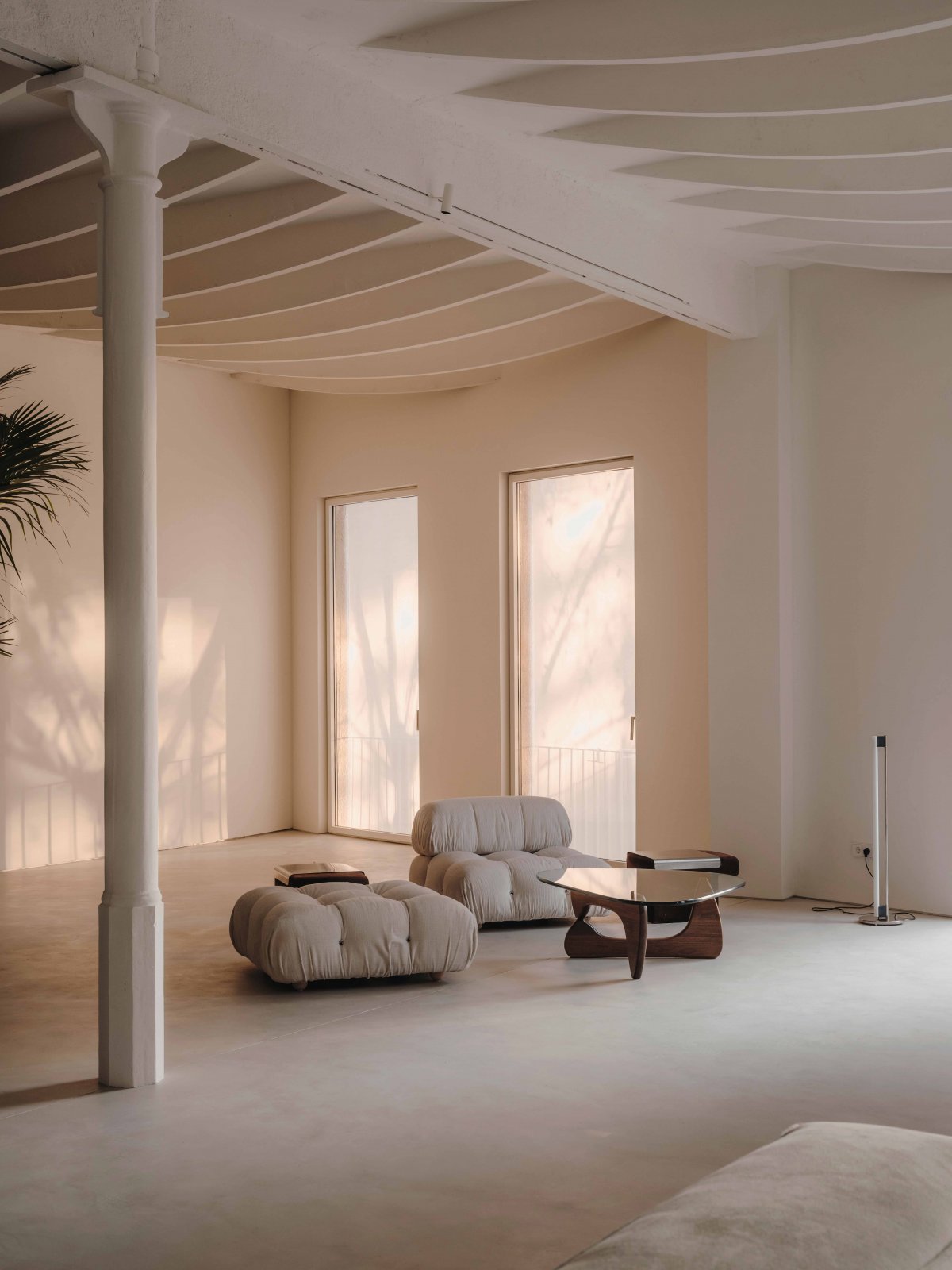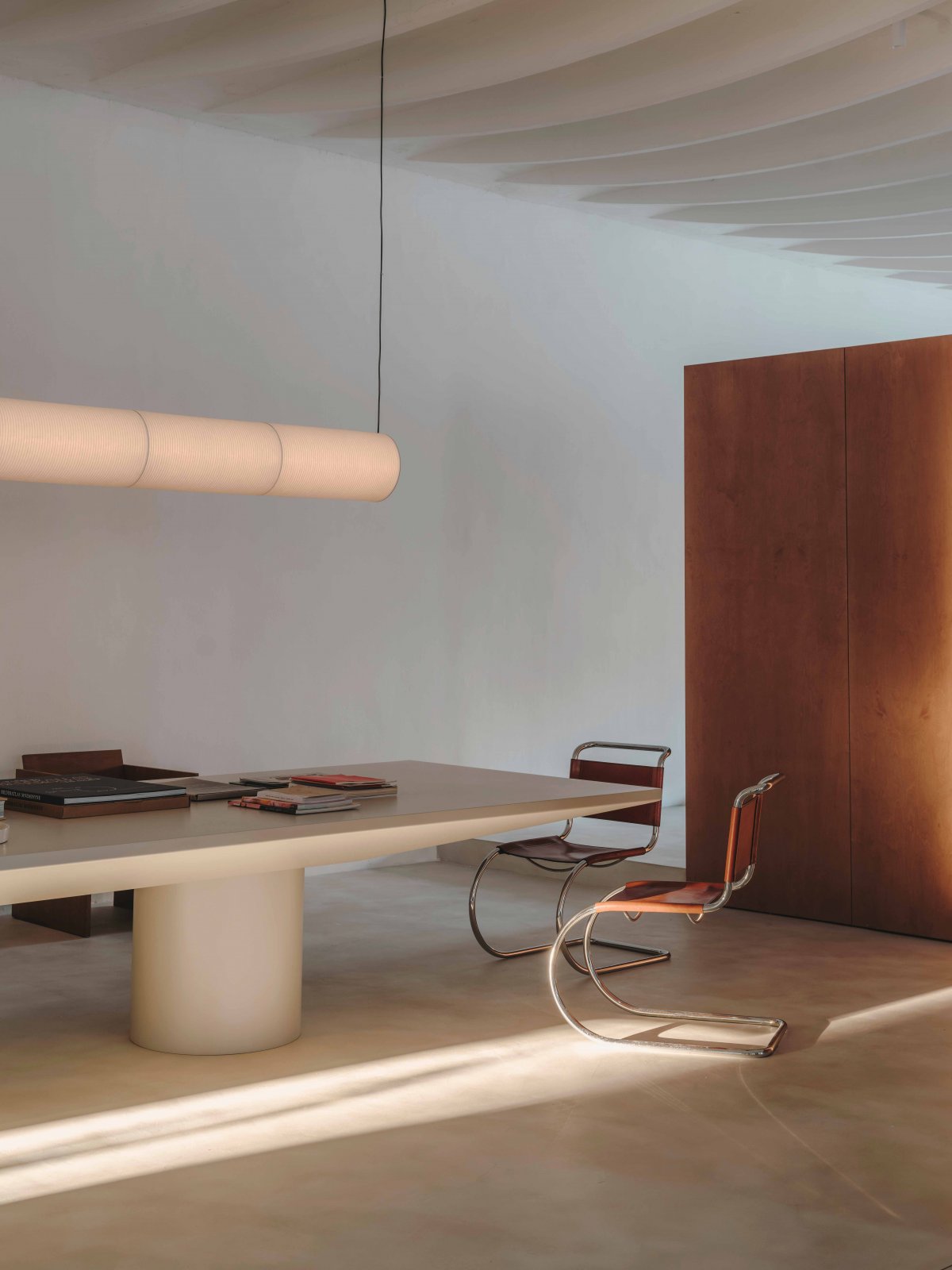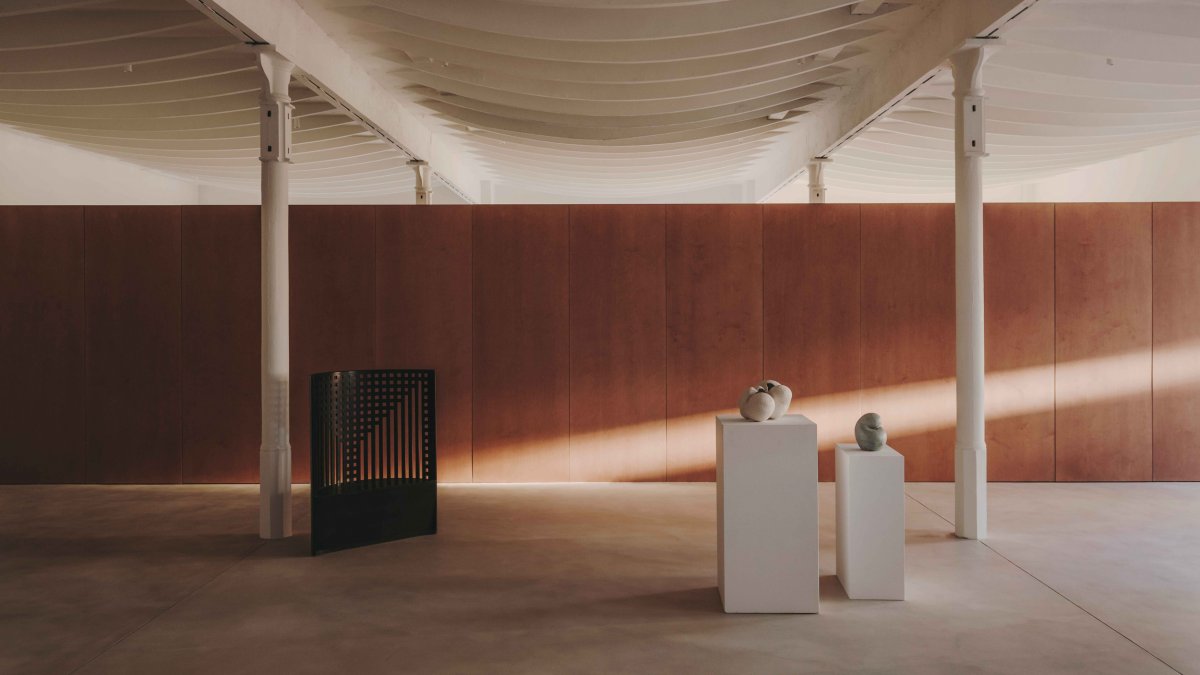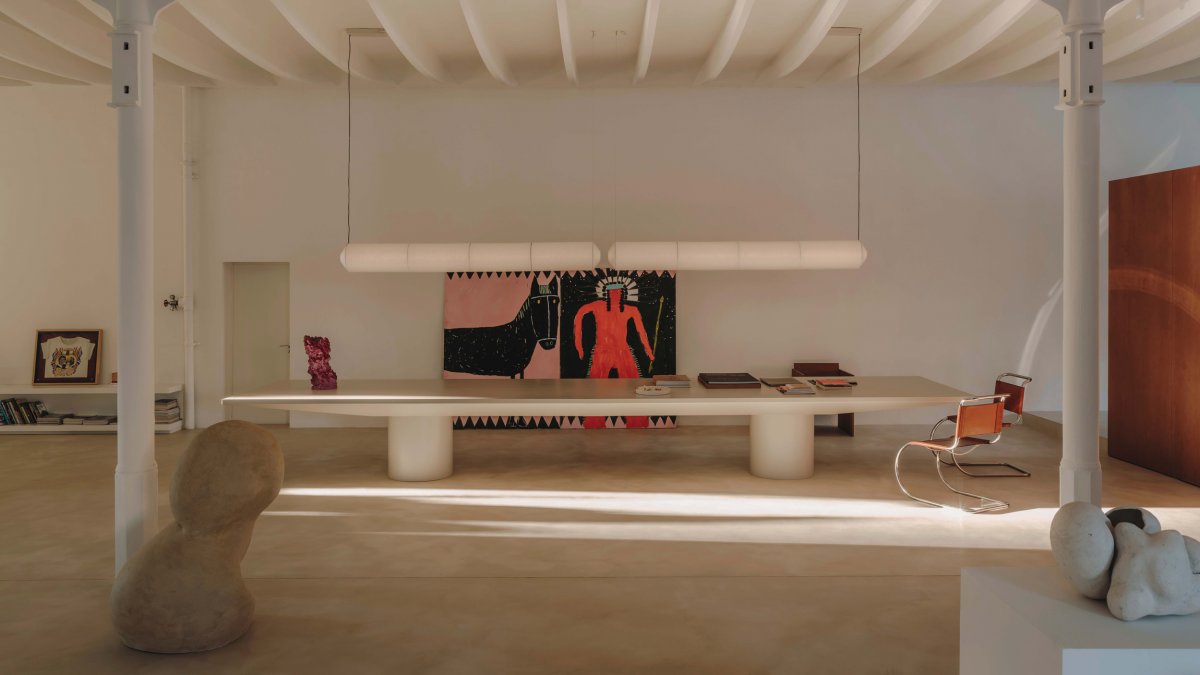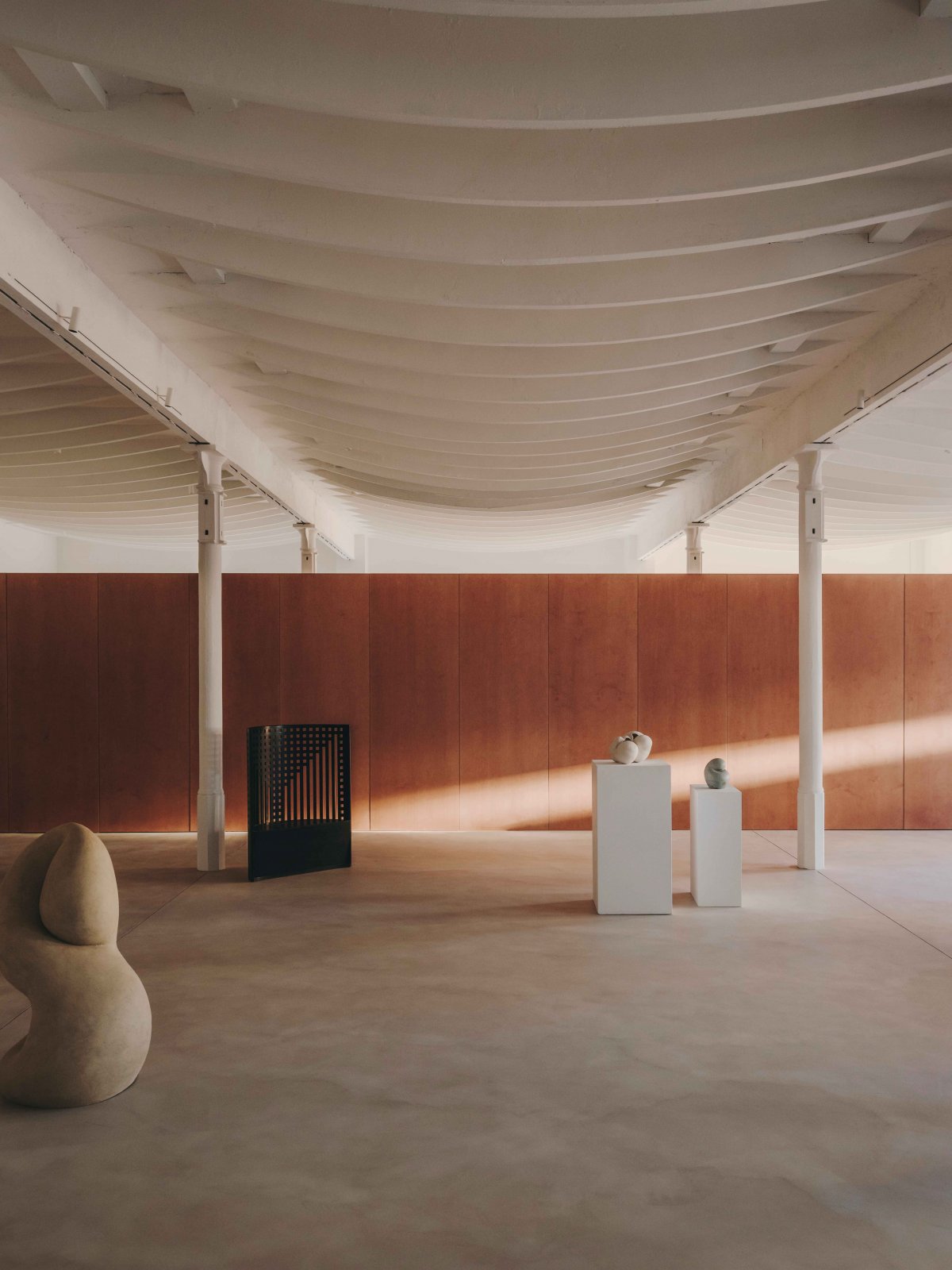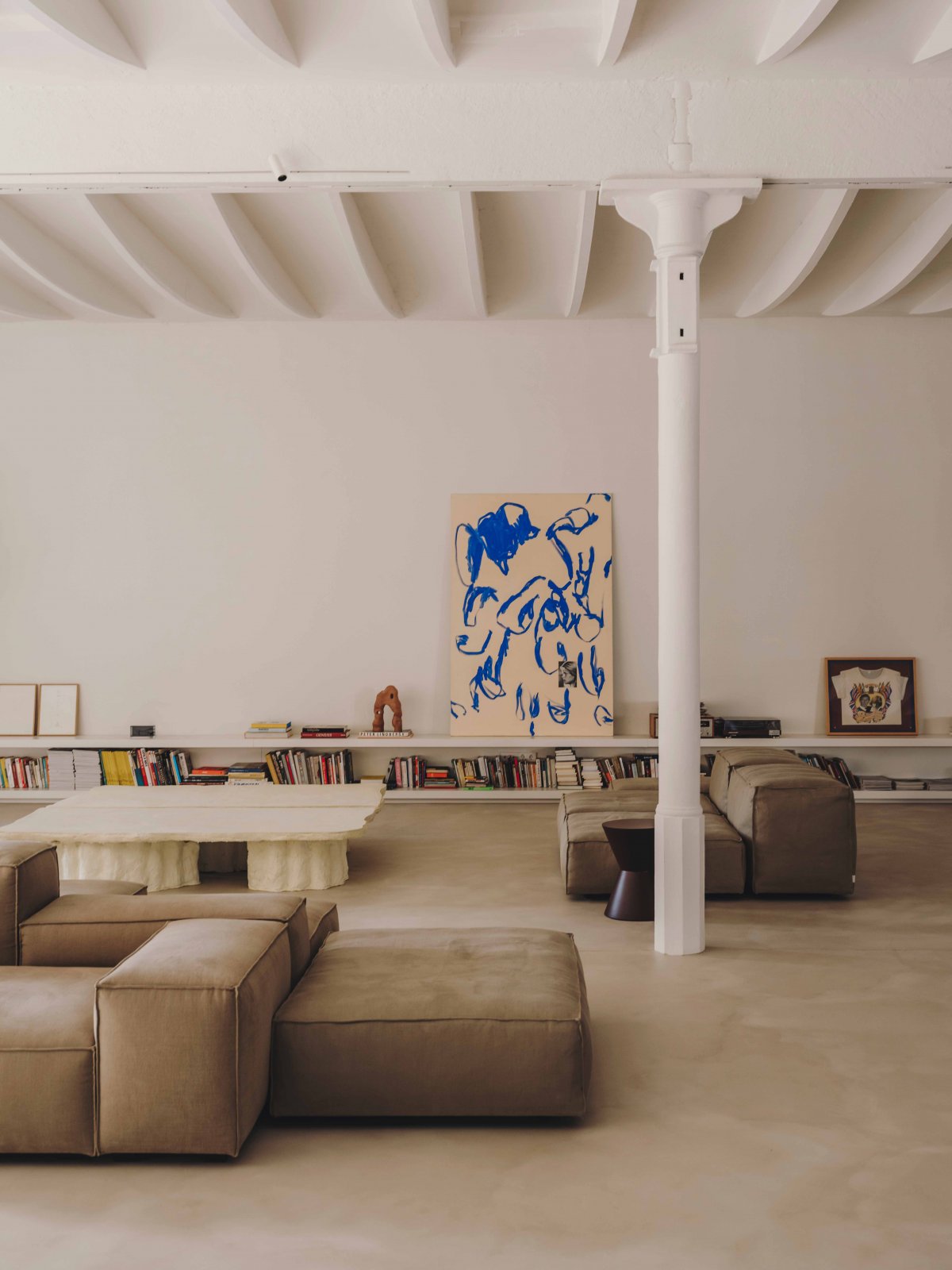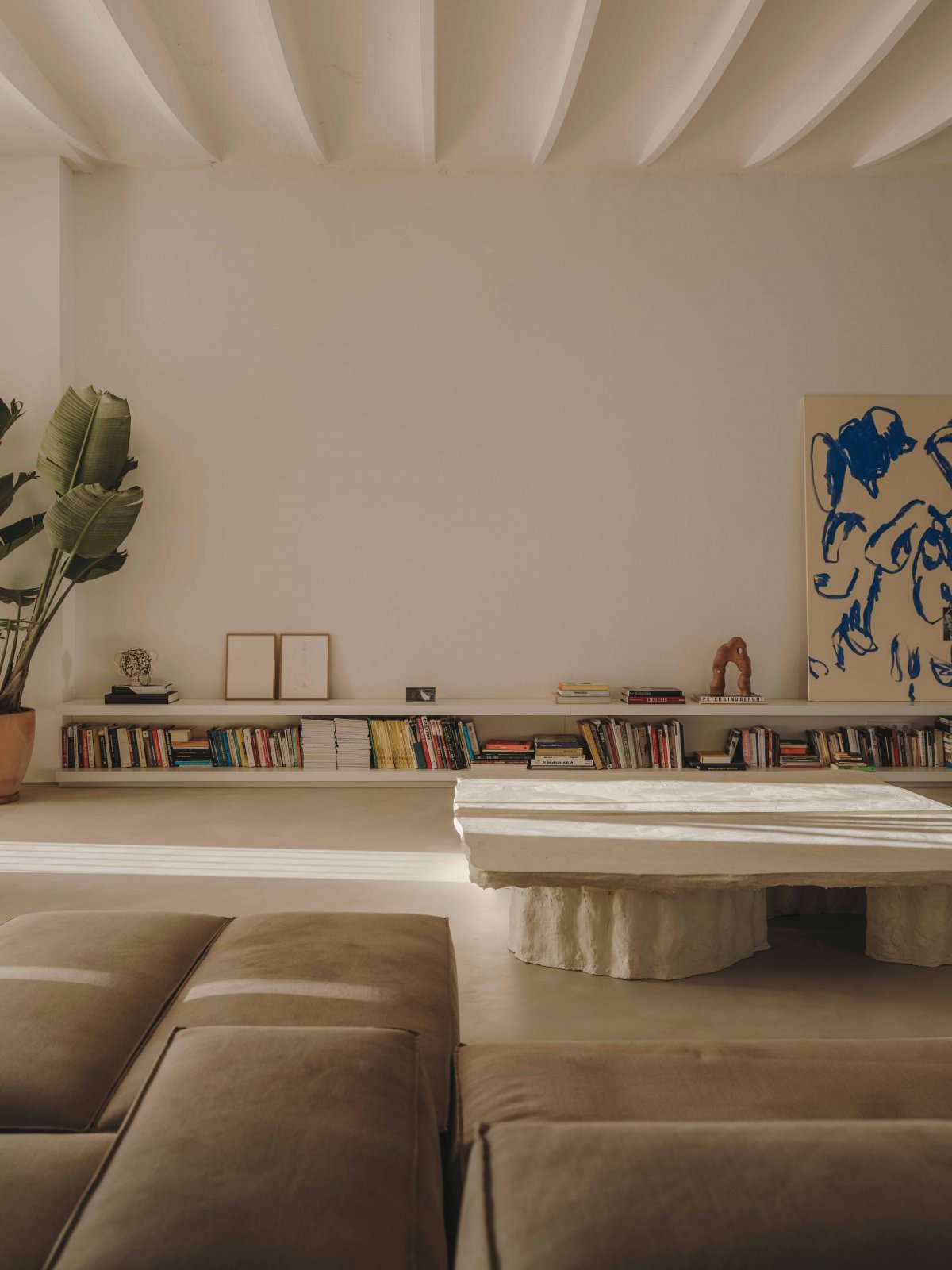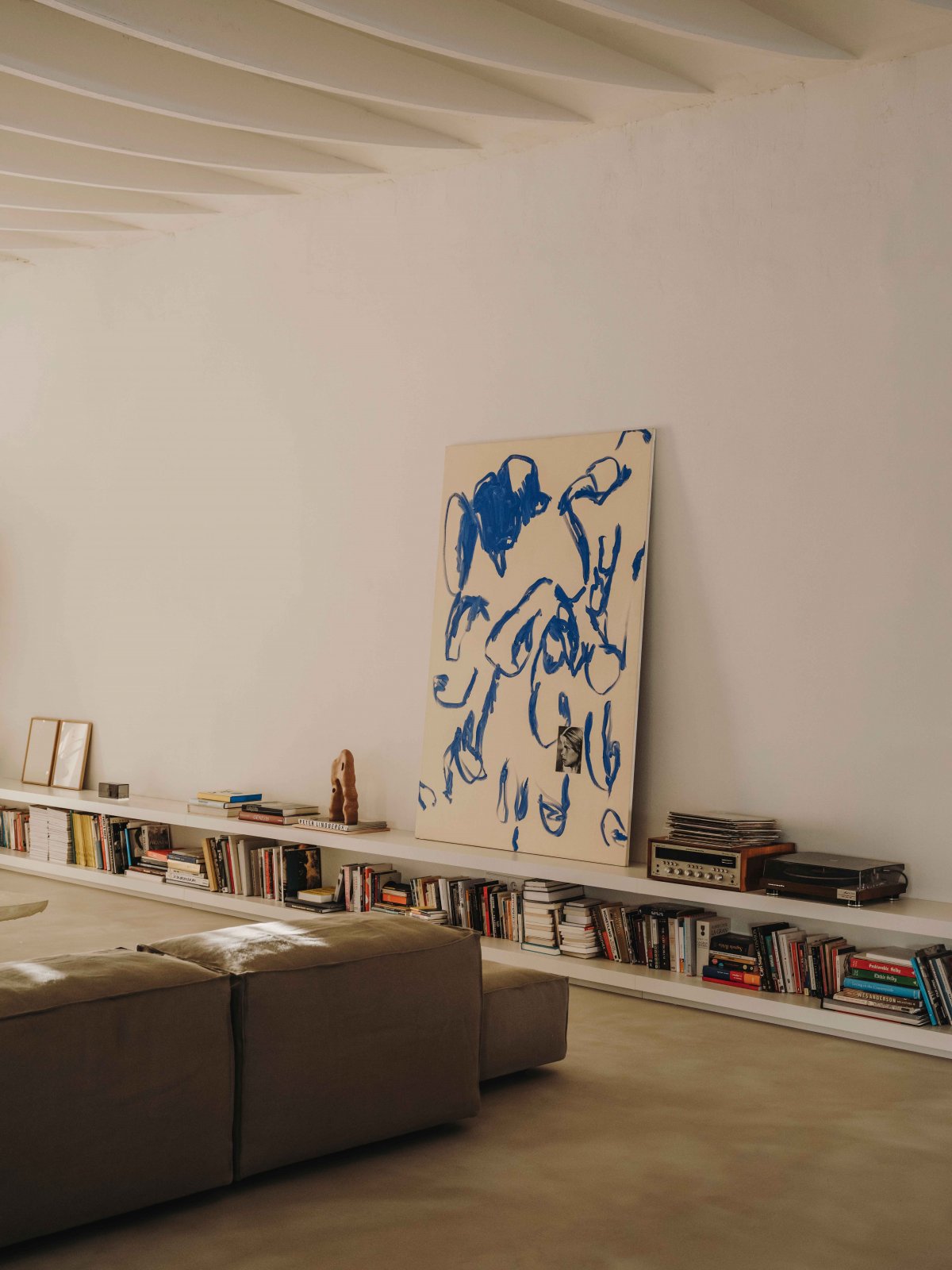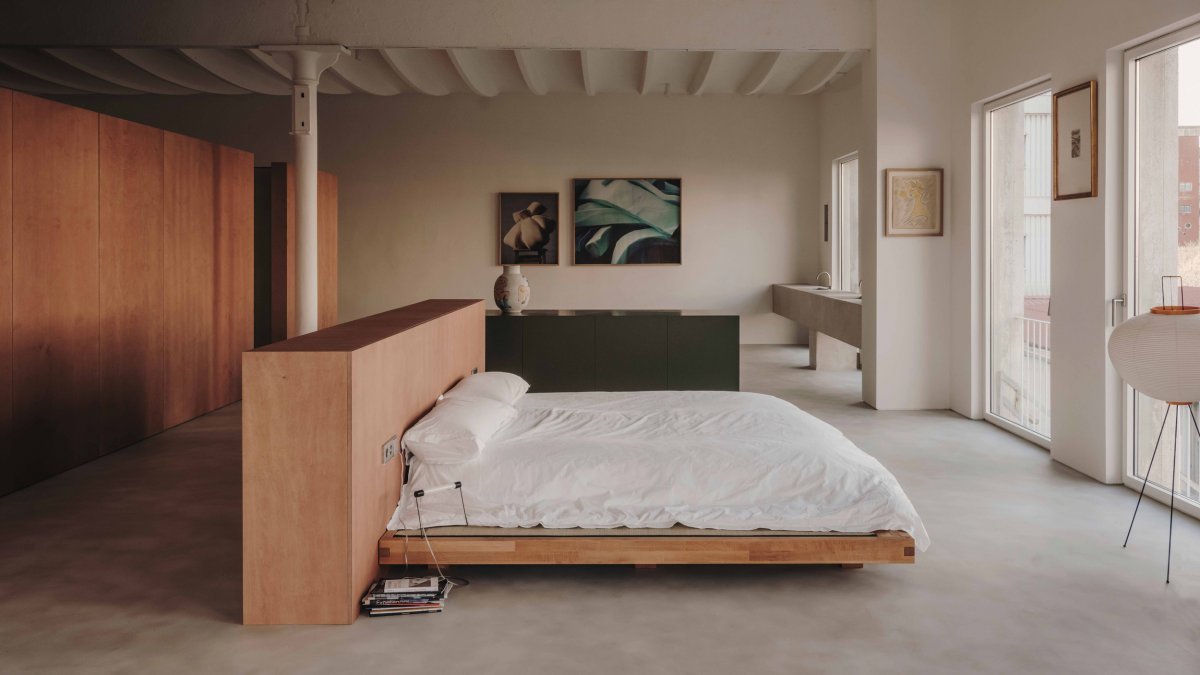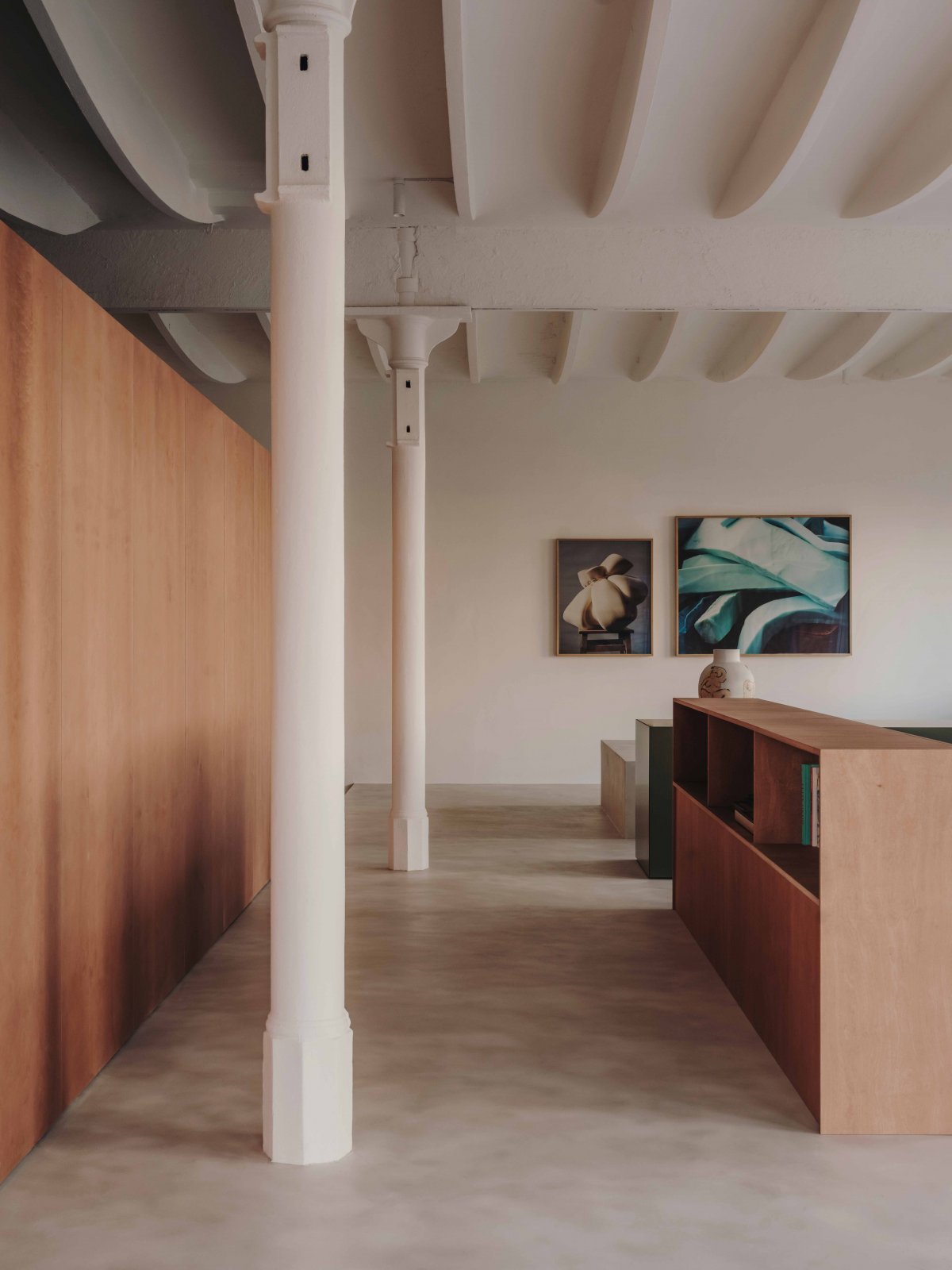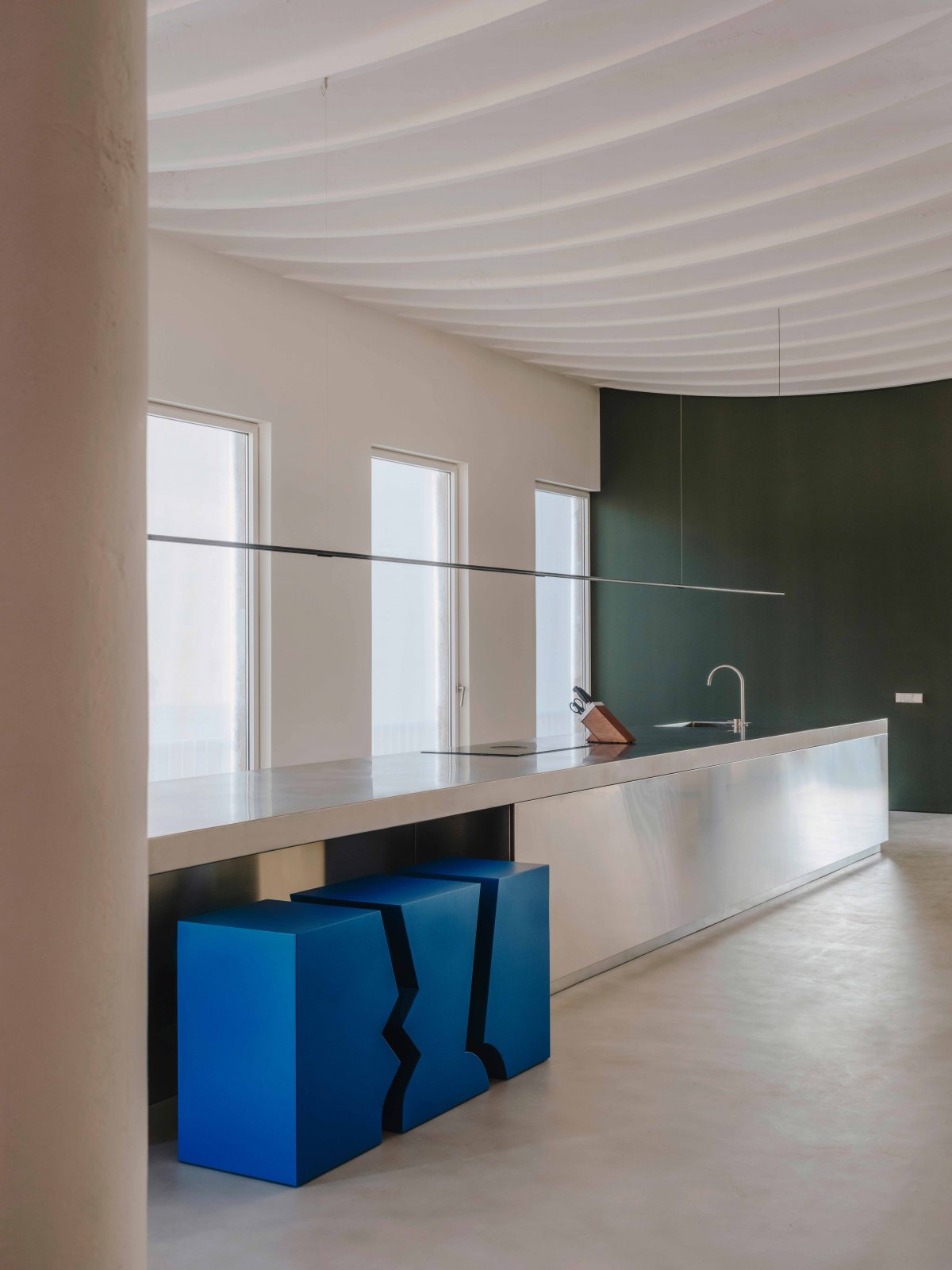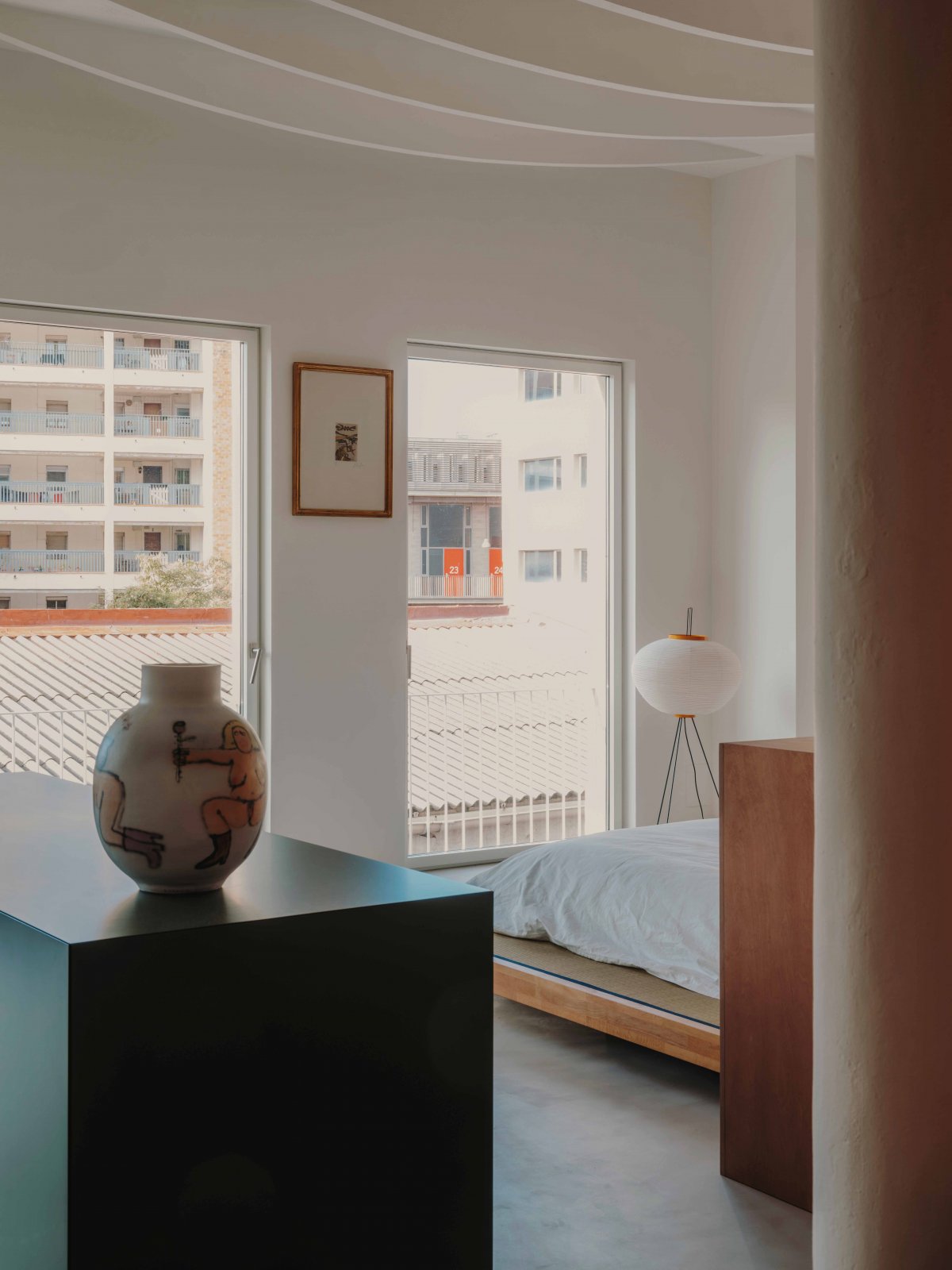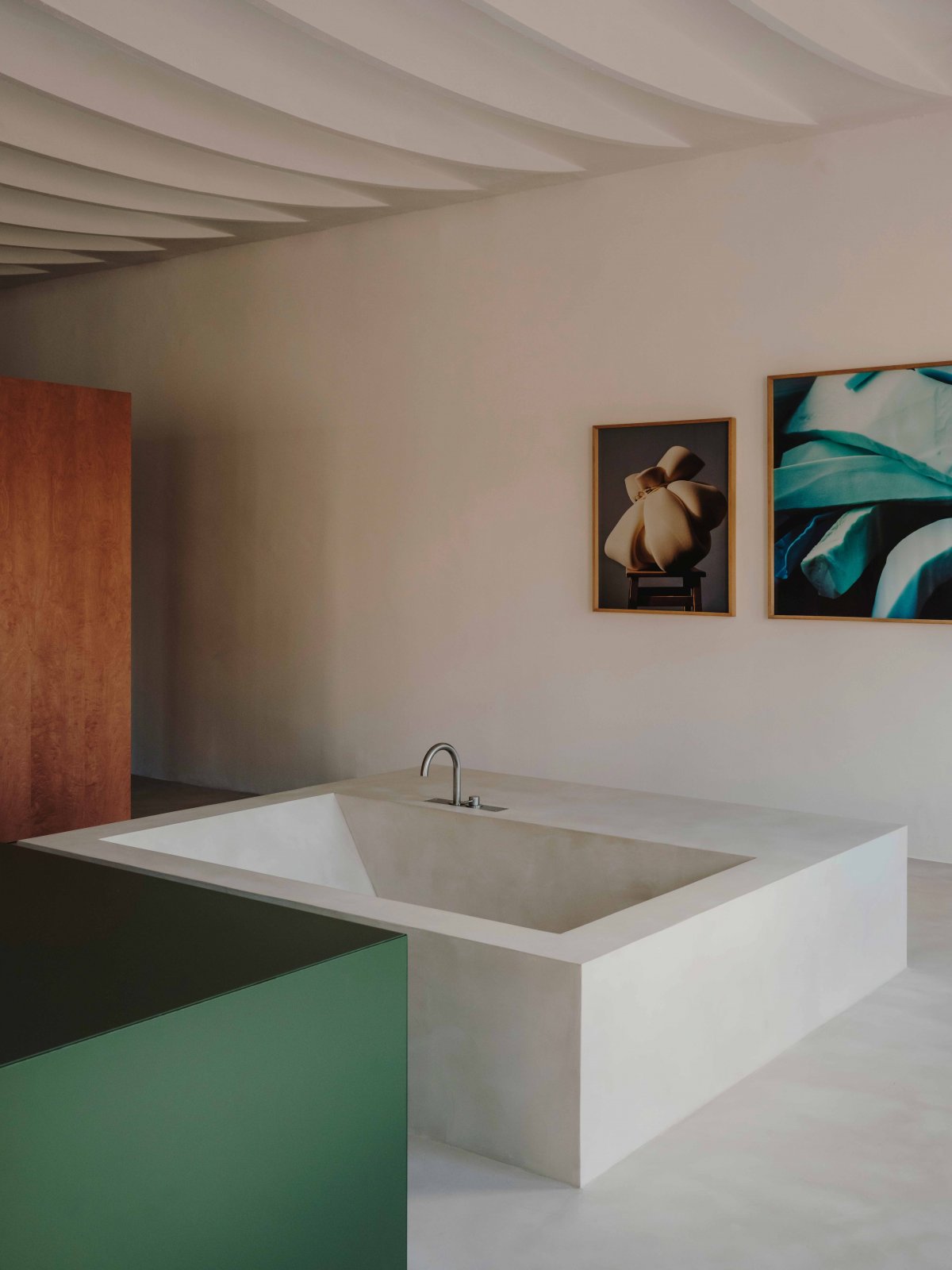
An intersection between domesticity and art, this project transforms an industrial studio into a comfortable home that doubles as an art gallery. By maintaining some of its original vagueness, this intervention recognizes the client’s way of life by using spatial indetermination to blur the limits of the domestic sphere.
In this setting, the client found a unique industrial space to set up their home and the art gallery they run. The flat features a single generous and diaphanous space with windows on three of its walls and an open plan only interrupted by two rows of steel columns. Its peculiar ceiling reproduces the local construction techniques developed during the 19th century by Catalan architect Joan Torras, who introduced beams of equal strength reinforced by a ceramic core and a vaulted shape.
Acknowledging that the strengths of the apartment lie in its light, spacious atmosphere and distinctive structure, the project follows the simple premise of reducing the spatial divisions to a minimum. Thus, the floor plan is split in two: a private and public area, with the latter acting as a living room and exhibition space. To emphasize lightness and fluidity, these areas are divided by a service core detached from walls and ceiling. Built in wood, this central volume stands out not as a wall but as a free-standing element that allows one to perceive the space as a whole.
The living area is a flexible room with only two fixed pieces: an 8-meter-long stainless-steel kitchen counter and a long off-white table along the opposite wall. The rest of the room spans uninterrupted, allowing the exhibition space to adopt different configurations. Even though smaller in size and different in its use, the private room follows the boundless premise of the project too: bedroom and bathroom are merged into a single unit, where the bed, bathtub, and sink become loose elements within the room. A shower, a walk-in closet and a toilet are accommodated at the core.
The intervention encompasses two distinct actions. One is the restoration and enhancement of the existing qualities of the space through construction work. The other involves the design of site-specific interior elements offering new capacities. These elements include the kitchen counter and long table, uniquely designed for this project. The bathtub, shower, and sink were handcrafted in situ for the private area. During this process, Sara re-used a considerable amount of the construction’s waste materials to create a large coffee table for the space.
In this way, the project’s interior design is reinterpreted as a constellation of unique objects detached from the apartment’s limits. These elements contrast with the white-washed walls and light-wood furnishing to emerge as accents of colour and form, weaving a cohesive and contemporary identity throughout the project, drawing focus to the pieces and artwork.
- Interiors: Mesura
- Photos: Salva LóPez

